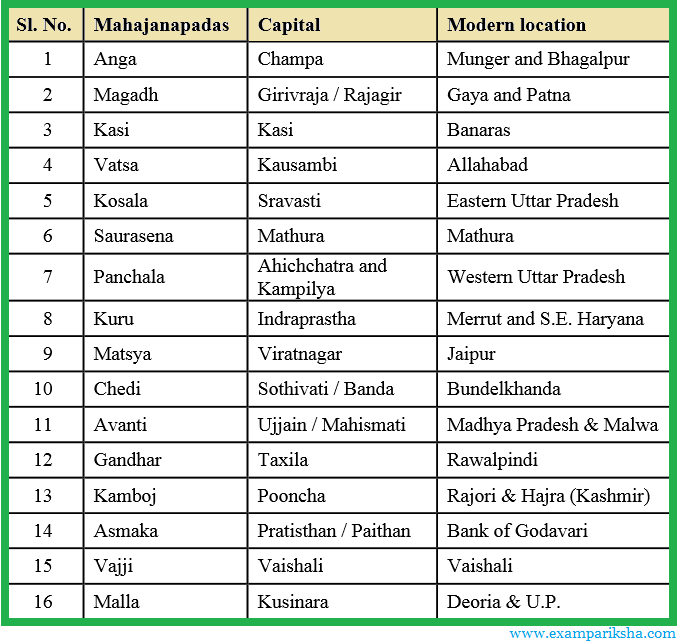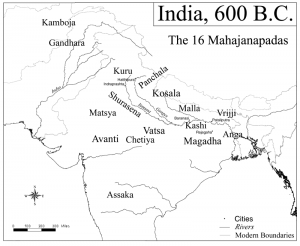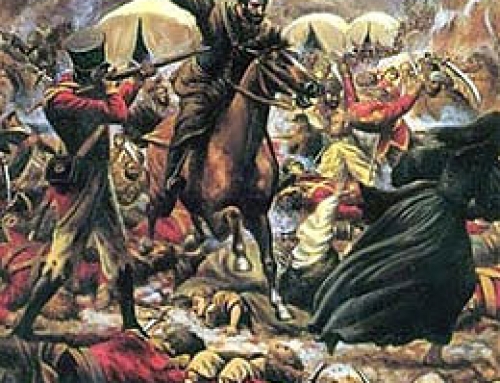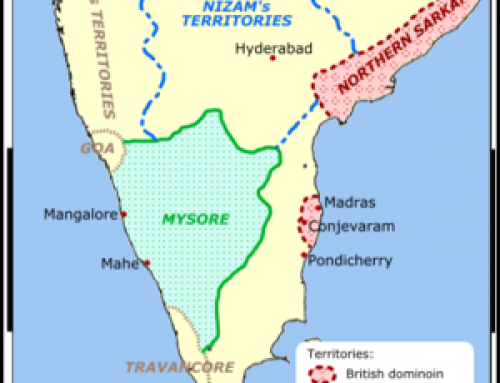The History of Sixteen Mahajanapadas:
In 6th century BC, ancient India had a number of kingdoms which emerged during the Vedic Age . This period saw socio-economic deveopment along with religious and political developments across the Indo-Gangetic plain. These permanent settlements led the evolution from janapadas to mahajanpadas. By sixth century BC, the centre of major political activity shifted from western part of gangetic plain to the eastern part, comprising the present day Bihar and eastern UP. Major reason for this shift was, the fetile lands of this area with better rainfall and rivers, their closeness to iron production centres also played a key role. In fact, it was the increased use of iron tools and weapons that enabled small states to become kingdoms, known as Mahajanapadas.
Political structure of these Sixteen Mahajanpadas :
Majority of these states were monarchical but some were also republics, known as “ganasangha”. Ganasangha had oligarchic system for governance where administration was headed by an elected king who had a large council for his aid. This was close to be called a democracy but common man had no say in administration.
There were 16 mahajanapadas / kingdoms which are mentioned in the ancient literature and scriptures. It must be noted here that these sixteen mahajanapadas were in existence before the rise of Buddhism in India. The sixteen Mahajanapadas are given here in quick look format.
We shall now look into a little detail of each one of these sixteen mahajanapadas and their capitals:
- Anga: This mahajanapada finds mention in the Atharva Veda and the ‘Mahabharata’.During the reign of Bimbisara, it was taken over by Magadha empire. It is located in present day Bihar and west Bengal.
- Magadha: It also finds reference in the Atharva Veda which tells hthat Magadha was semi-brahmanical place. It was situated in present day Bihar close to Anga, separated by river Champa. Later, Magadha became a center of Jainism. Along with that, the first Budhist Council was held in Rajagriha.
- Kasi: It was loacted around Varanasi which was the capital as well. It is believed that this city got its name from rivers Varuna and Asi as mentioned in the Matsya Purana.
- Vatsa or Vamsa: This mahajanapada followed the monarchical form of governance. This kingdom was one of the sixteen Mahajanapadas. And its capital was located at Kausambi. This was an important city for economic activities. There was a prosperous trade and business scenario in 6th century BC. After the rise of Buddha, the ruler Udayana made Buddhism a state religion. Vatsa was located around the present day Allahabad.

- Kosala: It was located in modern Awadh region of Uttar pradesh. Its capital was Ayodhya.
- Saurasena: Its capital was Mathura. This place was a centre of Krishana worship at time of Megasthenes. Also there was a dominant follwership of Budhha here.
- Panchala: Its capital was Ahichchatra and Kampilaya for its noerthern and southern regions respectively.It was located in present day western Uttar Pradesh. And it shifted from monarchy to being a republic later.
- Kuru: Their capital was Indraprastha in present day meerut and Haryana. The region around Kurukshetra was supposedly the site for kuru Mahajanapada. It shifted to a republiuc form of governance later.
- Matsya: It was located to south of the Kurus and west of the Panchalas. Its capital was at Viratanagar, which lays around present day Jaipur.
- Chedi : This was mentioned in the Rigveda, Its capital was Sothivati. It lay around the present day Bundelkhand region.
- Avanti: Avanti was important in terms of rise of Buddhism. Its capital was located at Ujjaini or Mahismati. It was located around present day Malwa and Madhya Pradesh.
- Gandhara: Their capital was at Taxila. Gandhara are mentioned in the Atharva Veda as people who were highly trained in art of war. It was important for international commercial activities.
- Kamboja: Kamboja had its capital named as Pooncha. It is located in present day Kashmir and Hindukush. Various literary sources menton that Kamboja was a republic.
- Ashmaka or Assaka: The capital of this mahajanapada was located at Pratisthan or Paithan. Ashmaka was located t the bank of Godavari.
- Vajji: Its capital was Vaishali. It was an important Mahajanapadas. The major races residig here were Licchavis, Vedehans, Jnatrikas and Vajjis.
- Malla: It was one of the sixteen mahajanapadas. It finds mention in ‘Mahabharata’ and Buddhist and Jain texts. They were a republic (Samgha). Their capital was Kusinara located around present day Deoria and Uttar Pradesh.
This short information about these 16 mahajanapadas and their capitals will be very useful for solving the questions asked in various exams like UPSC, SSC, NET, NDA, CDS, State Exams, etc. The table given above helps in memorizing the important places of these sixteen Mahajanpadas and their capitals.
If you want us to add any more details in this article, then please feel free to mention that in the comments below.





